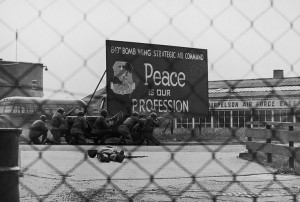While watching Brokeback Mountain (2005) I noted the ways in which Jake Gyllenhaal and Heath Ledger’s character’s masculinity were reinforced after an act of homosexuality on screen. I know I mentioned something about the landscape in relation to their masculinity and how it was used to reinforce their masculinity. Having both men out in the mountains acting as brave warriors of nature and under the genre of the western there’s no way that this film can be depicted as non masculine.
Character interactions: For starters, when Jack Twist played by Gyllenhaal is seen as the observer to Ennis Delmar played by Ledger, he is automatically given a razor in order to toughen his image. Through this act, he “distracts” the audience thinking anything beyond the gaze of interest he gave to Ennis-but who are we kidding, we knew he was checking him out!
After the first time that Jack and Ennis shared an intimate moment, we see how the morning after, Ennis storms out of their tent in what seems confusion/frustration and then there is a jump cut to the bloody opening of a dead sheep. This juxtaposition was one of the greatest ones in the film because it was to make a comment on how what they shared is considered deathly and controversial. To even bring this point further one can comment on how his masculinity has been destroyed and torn apart.
Ennis’ interaction with the men on the lawn while watching fireworks with his family. I saw this as a way of Ennis’ defending his masculinity because he fought against very stereotypical men in order to protect his daughters. This action commented on how masculinity does not necessarily dictate if he is a good father or good male role model for his daughters.
Camera Angles/Techniques: This is also seen in the use of shallow depth of field when Jack is bathing in the background of Ennis. This decision emphasized how homosexuality isn’t something that we expect to see in western films, let alone from two very “masculine men.” While watching, I was expecting him to look over at him, but he didn’t. Not having Ennis look over at Jack shows how he isn’t willing to return the gaze that Jack checked him out with towards the beginning of the film, but also how he has to uphold his masculinity by not checking out other men.
Music: I thought it was an interesting romantic choice of music when the men were working out in the fields with the sheep and the horses. This juxtaposition between their very “masculine roles” and romantic music describes perfectly their situation as homosexual males in a western setting.
Dialogue: Did anyone pick up on the nemonia talk? Was that referring to homosexuality?
Overall, there are many things that I picked up in addition to the things I have discussed in this post and was wondering if anyone had the same observations or different ones. I loved this film because it explored a lot of the flaws with masculinity, homosexuality and fatherhood.

